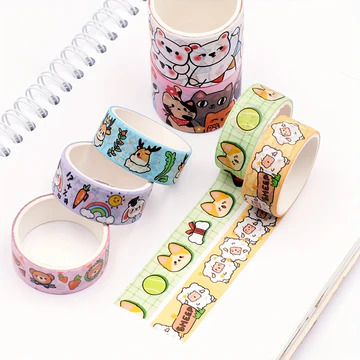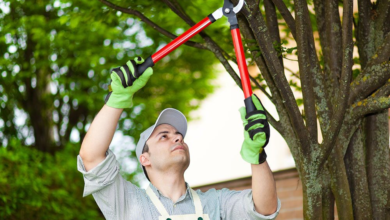How do you use Japanese tape?

If you’re into DIY projects, scrapbooking, or home decoration, you’ve probably come across Japanese tape. It’s more commonly known as washi tape—a decorative adhesive tape that’s made from traditional Japanese paper called “washi.” Washi tape is loved for its versatility, colorful designs, and ease of use. It’s a simple but fun tool that can turn ordinary items into something extraordinary with just a little bit of creativity.
Whether you’re a crafting pro or someone looking to dabble in creative projects, understanding how to use Japanese tape can add an artistic flair to your work. In this guide, I’ll explain why you should consider using this tape, the different types available, its benefits, and how to get started using it in your everyday projects.
Why Choose Japanese Tape?
Before diving into how to use Japanese tape, it’s important to understand why it’s such a popular choice. Here are a few reasons why so many people love it:
- Design Variety: Japanese tape comes in endless designs, colors, and patterns. Whether you like something simple and monochrome or vibrant and eye-catching, there’s a tape for everyone. You can find seasonal designs, florals, geometric patterns, and even ones that feature famous artwork.
- Eco-friendly: Washi tape is typically made from natural fibers like bamboo, hemp, or rice, which makes it more eco-friendly compared to other types of adhesive tapes. Plus, it’s easy to recycle.
- Gentle on Surfaces: Unlike regular adhesive tapes, Japanese tape doesn’t leave any sticky residue when removed. You can safely use it on walls, furniture, or notebooks without worrying about ruining the surface.
- Reusable: Washi tape can often be removed and repositioned. If you make a mistake or want to change the design, you can peel it off and try again. It’s perfect for people like me who tend to change their mind mid-project!
- Easy to Use: No need for scissors! Japanese tape is easy to tear by hand, making it super convenient to work with. It’s thin yet durable and doesn’t require extra tools to apply.
Types of Japanese Tape
There’s more than just one kind of Japanese tape! Here are some common types you might come across when shopping for it:
- Standard Washi Tape: This is the most common type of Japanese tape. It’s made from traditional washi paper and comes in various widths, from very slim to thicker rolls. You’ll find them in different patterns, designs, and colors.
- Foil Washi Tape: Foil washi tape has metallic accents, which can add a bit of shimmer and glam to your projects. It’s perfect for adding a little sparkle to scrapbooks, invitations, or gift wrapping.
- Fabric Washi Tape: Some washi tapes have a fabric texture, which gives them a unique feel and a slightly different look. They’re great for adding texture and dimension to your work.
- Wide Washi Tape: If you need more coverage, wide Japanese tape is a good option. It’s often used for larger projects like decorating walls or furniture.
- Masking Washi Tape: This type is more functional. It’s commonly used in painting projects, as it can be applied to a surface and removed without leaving marks. Think of it as painter’s tape with a decorative twist!
Benefits of Using Japanese Tape
Now that you know about the types of Japanese tape, let’s look at some of the benefits that make it a great tool for your creative projects:
- Customizable Decor: You can use Japanese tape to create custom designs on walls, notebooks, or even furniture. It’s an inexpensive and temporary way to personalize your space without any long-term commitment. If you ever get tired of the design, just peel it off!
- Great for Organizing: Use washi tape to label items in your home or workspace. You can write directly on it, making it a cute and colorful alternative to traditional labels. Plus, it adds a bit of personality to your organization efforts.
- Crafting Made Easy: If you love crafting but hate messy glues and complicated tools, washi tape is a game-changer. You can easily stick it onto surfaces without needing to wait for it to dry, and if you make a mistake, you can quickly reposition it.
- Perfect for Gifting: Wrapping presents with Japanese tape adds a personal and artistic touch. You can make your gift wrap stand out by using washi tape to seal the package, make fun patterns, or even create DIY cards.
- Kid-Friendly: Since it’s easy to tear, reposition, and remove, washi tape is ideal for kids’ crafting projects. It’s safe, non-toxic, and allows for endless creativity without any hassle.
How to Use Japanese Tape: Steps to Get Started
Using Japanese tape is incredibly easy, and the possibilities are endless. Below are some simple steps and ideas for how to incorporate it into your projects:
Step 1: Pick Your Project
Decide what you want to do with the tape. You can decorate anything from notebooks and cards to walls and planters. Some popular projects include:
- Decorating phone cases
- Creating custom bookmarks
- Adding borders to scrapbooks
- Wrapping gifts in a unique way
Step 2: Choose Your Japanese Tape
Select a tape that matches your project. If you’re doing something small like a notebook, thinner tapes work well. For larger projects like wall decoration, go for wider tape. You can also mix and match different patterns to make your project more visually interesting.
Step 3: Apply the Tape
You don’t need any special tools to apply Japanese tape. Simply tear off a piece from the roll, and place it where you want it. Make sure to smooth it out as you go to prevent air bubbles or wrinkles. The tape can easily be repositioned if you make a mistake.
Step 4: Get Creative!
One of the best things about washi tape is its versatility. You can use it to create borders, patterns, or even entire pictures. Layer different tapes, cut them into shapes, or use them to frame photos. If you’re working on a notebook or planner, washi tape can also help you divide pages or highlight important dates.
Step 5: Reuse or Replace
Need a change? Don’t worry—just peel off the tape and start fresh. Most washi tapes are reusable, so you can reposition them or use them on another project. This makes it super convenient if you’re someone who likes to change things up often.
Conclusion
Japanese tape is one of those craft supplies that you’ll wonder how you ever lived without. It’s so versatile, easy to use, and perfect for all kinds of projects—whether you’re decorating, organizing, or just looking to add some color to your space. With so many designs and types to choose from, there’s a Japanese tape for every taste and occasion.
What’s great is that it’s also eco-friendly and gentle on surfaces, so you don’t have to worry about making a permanent mess. Whether you’re a seasoned crafter or someone new to DIY, washi tape is the perfect way to add a touch of creativity to your life.
FAQs
Can you write on Japanese tape?
Yes! Most types of washi tape are easy to write on, making them great for labeling or adding messages to your projects.
Is Japanese tape reusable?
In many cases, yes. Washi tape is often repositionable and can be reused on different surfaces, as long as it hasn’t lost its stickiness.
Will Japanese tape damage walls Nope! That’s one of the best things about Japanese tape—it’s gentle on surfaces and can be removed without leaving any sticky residue behind.
Where can I buy Japanese tape?
You can find Japanese tape at craft stores, stationery shops, and online. Many brands offer a wide variety of patterns and designs, so you’ll have plenty of options to choose from.
What’s the best surface for using Japanese tape?
Japanese tape works well on smooth surfaces like paper, glass, and plastic. It might not stick as well on rough or uneven surfaces.





